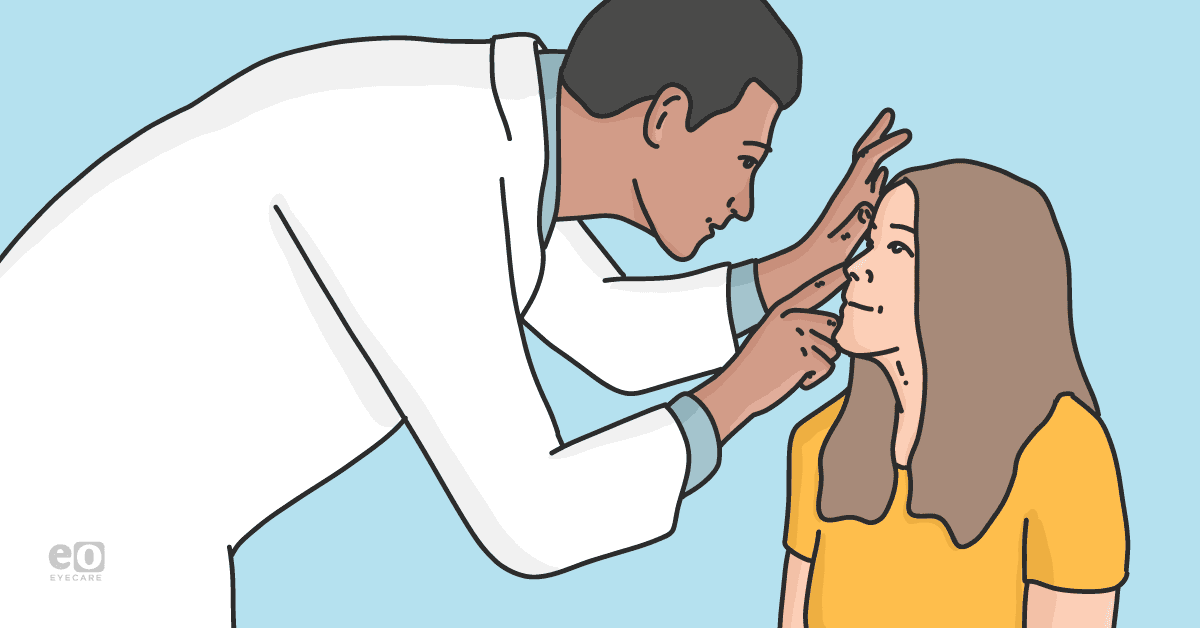Contact lens application and removal is not a simple task for new wearers, especially those who have difficulty touching their eyes or who have a smaller fissure size. Whether it is soft contact lenses or rigid gas-permeable contact lenses, practice is the key to making sure your patients become an expert in inserting and removing their lenses. It is essential that patients master these techniques to reduce the risk of any corneal or conjunctival abrasion when using these lenses.1
As optometrists, it is our job to make sure they master this technique. A systematic approach must be used for patient training during their initial insertion and removal (I&R) teach. This article will focus on how to teach patients the I&R of contact lenses and is accompanied by downloadable step-by-step instructions to hand out to your patients.
Soft contact lens insertion and removal
Soft contact lenses are the most common type of lenses used worldwide, and patients must fully understand the insertion and removal process in order to safely use contact lenses correctly.1
Patient training tips1,2
- The advice that stays the same for all contact lens wear instructions is to WASH YOUR HANDS.
- First, make sure to create a comfortable environment for patients away from other patients and waiting areas so they do not feel as if they are “being watched,” which could make them uncomfortable and nervous.
- If your staff member is teaching a patient, ensure that they are supportive throughout the process and not getting angry/irritated with the patient's failed attempts.
- In addition to contact lens insertion and removal, we also need to consider contact lens wettability and handling. Wettability refers to how easily liquid spreads on the contact lens.3
Download the Step-by-Step Contact Lens Insertion, Removal, and Care Instructions
📝
Step-by-Step Contact Lens Insertion, Removal, and Care Instructions
Use these guides to improve patient education and compliance for new contact lens wearers.
Rigid gas permeable lens insertion and removal
The techniques for rigid gas permeable (RGP) contact lens application and removal are similar to soft contact lenses, although there are a few steps that are different. A similar contact lens training section should be prepared for the patient; however, educating the patient about different RGP lens solutions is crucial. Patients must know not to accidentally put the “red cap” solution inside the eye.4,5 This tip and instructions for contact lens I&R are included in the downloadable guide.
“Another key piece of information to convey is never to use tap water to clean the lenses.”
You will also need to educate the patients about the adaptation period—the time it will take for them to get used to the lenses. There will be patients who will feel these lenses for at least a few days to weeks until they become adjusted to it.4,5
Scleral contact lenses
When it comes to scleral lenses, patients must learn the techniques of handling these lenses prior to any insertion and removal. Handling includes cleaning, storing, using the plunger known as DMV (not to be confused with the Department of Motor Vehicles), and using the saline.
Patient training tips6
- Educating your patients about holding and controlling the lids is the key to a successful insertion.
- Advise your patients to keep both eyes open and not close the fellow eye. The patients need to understand that the insertion and removal of scleral lenses will be a bit messy, but the comfort and vision they will receive are far superior.
- Patients should also consider using lint-free paper towels during the application and removal process.
- When it comes to scleral lenses, removal can also be a bit challenging. Patients must understand the idea of breaking the suction and using a plunger for this process.
It is your responsibility to assure patients about the time it might take them to get better with the process and to not give up, as the results will be worth it. Showing them videos and giving out instructional handouts will not only help this process become easier for them but also, most importantly, safer.
Don't forget to grab the Step-by-Step Contact Lens Insertion, Removal, and Care Instructions
Conclusion
To ensure our patients master this skill, the insertion and removal of contact lenses must be done in a safe and supportive environment.
“Whether soft contact lenses or sclerals, the idea behind them is all the same, controlling the eyelids.”
I always tell my patients to practice in a comfortable seated position in the presence of others in case they get dizzy/syncope. This is where the instructional handouts come into play—they allow patients to refresh their knowledge, practice at home, or brush up before their next training appointment. Remember, patience, on all parts, is key. There will be patients that learn I&R in no time; others will take much longer, but you should be there for all patients at each step of the process.
